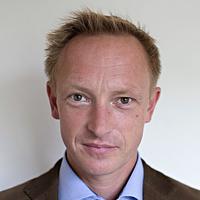Thank you Mr. President of the Parliamentary Assembly, thank you Ms. chairman of the European Museum Forum, Mr. Ambassador, members of parliament, dear friends.
It is with great honor that I stand here today to accept the Council of Europe Museum Prize for 2023 on behalf of all the employees and partners of The Workers Museum. Having one person standing here delivering a speech cannot possibly relate the excitement and jubilation and honor we felt upon receiving the news. I am, however, very grateful for the opportunity.
If you wish to know what The Workers Museum in Copenhagen is about, the value that we wish to constitute to the public and the impact we hope to have to people today, one approach is to look at the building we are located in, the former Workers’ Assembly Hall in Copenhagen.
If you wish to know what The Workers Museum in Copenhagen is about, the value that we wish to constitute to the public and the impact we hope to have to people today, one approach is to look at the building we are located in, the former Workers’ Assembly Hall in Copenhagen.
This building, opened in 1879, 144 years ago just this Sunday, was the first building built by the Danish labor movement as a meeting place for the broad and highly varied group of people, that came to be called the working class.
It was a place for meetings, debates, education, cultural activities and social gatherings, for creating a sense of belonging among people uprooted by processes of industrialization, migration and urbanization, and for the daily work of mass-organization of wage workers.
And across all of these activities, it was a place for democracy. For access to knowledge, freedom to assemble, to raise your voice and cast your vote. It was a place where people excluded from participating in formal democratic processes and perhaps unsure whether their opinions even mattered, would learn and exercise their ability to influence the development of society.
This is the story and message that we wish every visitor to The Workers Museum to experience.
We aim to strengthen the will to an equal and just society through engaging encounters with history. And through major restoration and a conceptual re-orientation of the museum, it is something that we now have a very strong platform for achieving.
Sound and light installations make meetings, speeches and labor movement songs come to life in the main meeting hall. More than 20.000 school children take part in educational activities in the building each year. New exhibitions communicate the history of the crowdsourcing and community effort that was the foundation of the building. And importantly, we underline that this is a story that reaches across boundaries and cultures.
While being the first in Denmark, The Workers’ Assembly Hall in Copenhagen is also the oldest of the thousands of similar buildings that were built in Europe in the decades around 1900.
The vast majority have disappeared, but a few remain, constituting unique physical testimony to an often overlooked story of popular activism and democratic participation in Europe.
It is heritage that resonates with the challenges brought about by rising inequality, the movement of people and the impact of crises and conflict that is sadly intensifying and it is heritage which can be an important resource in the dialogue and reflection and discussions of the future of democracy.
The Council of Europe Museum Prize is a huge motivation to continue our work to make this heritage a value to people today, and we are very grateful to the Committee on Culture, Science, Education, and Media and the European Museum Forum for this honor.
I would like to thank everyone at The Workers Museum for their commitment to making the institution matter, and also the communities and organizations that have become an integrated part of how the development of the museum happens.
First and last, I want to thank the people who make use of the Workers Museum, and I hope to see all of you there as well. Thank you for your attention.
